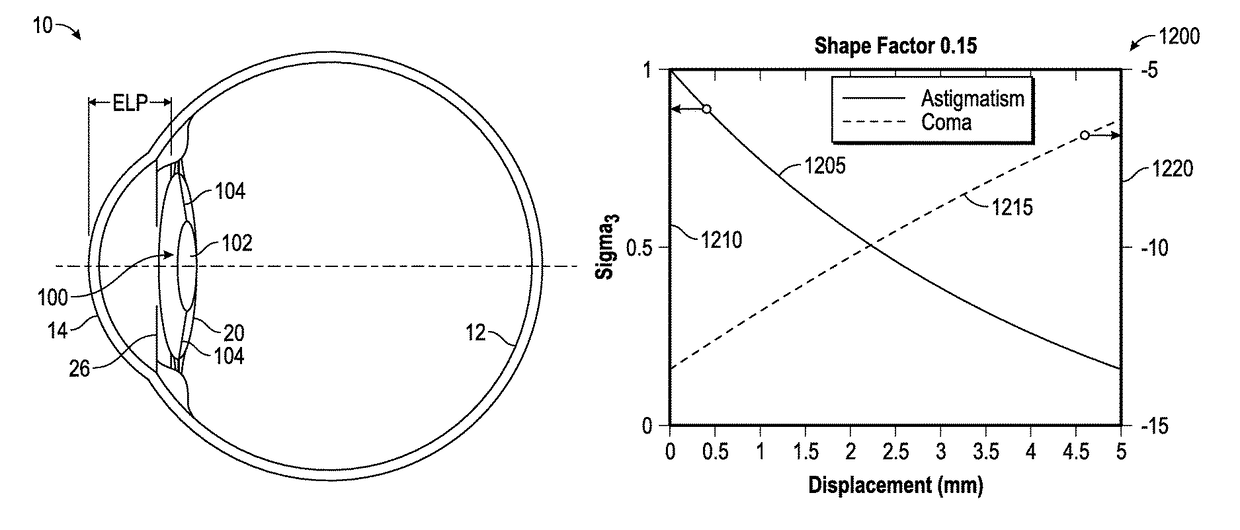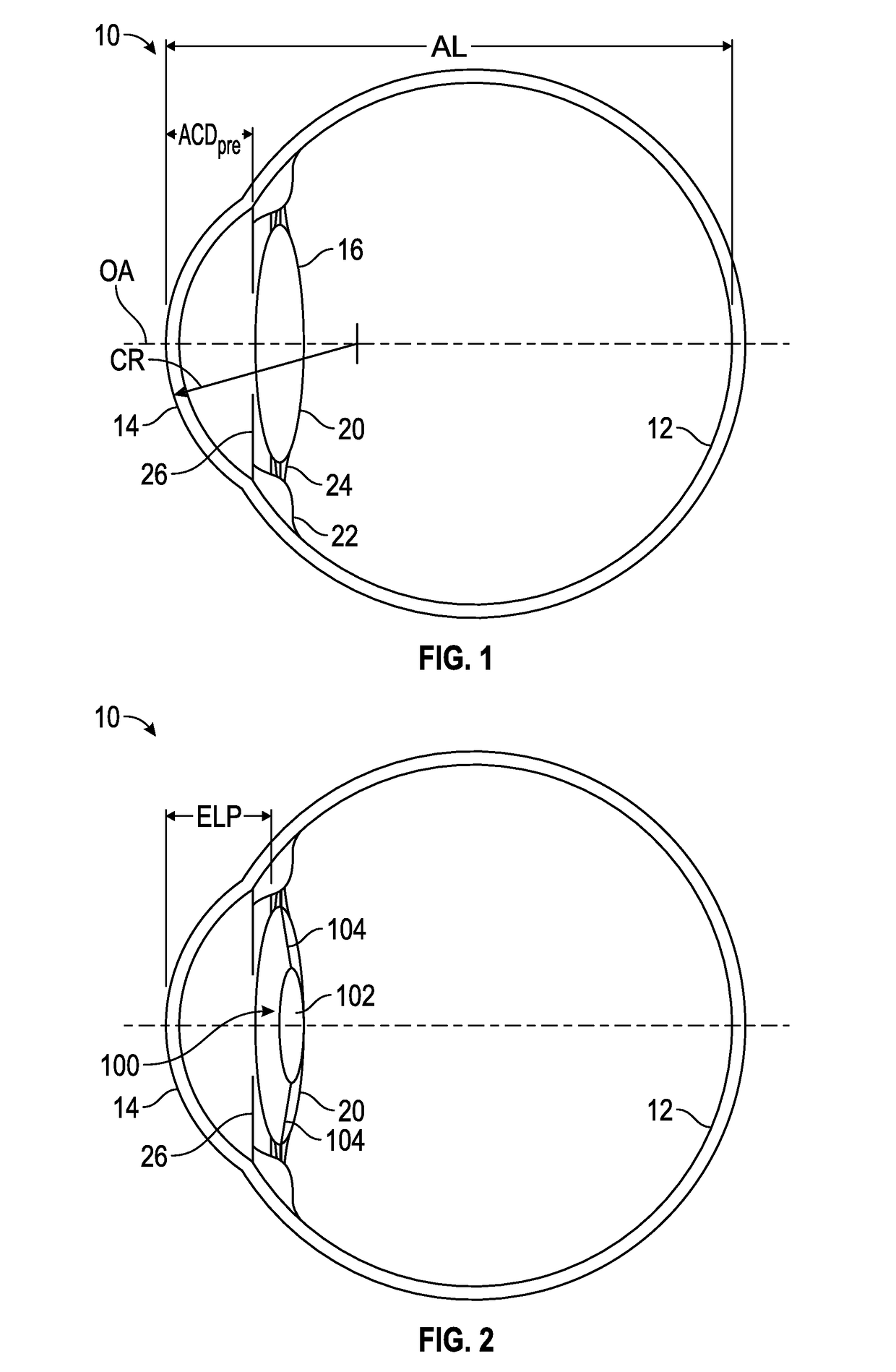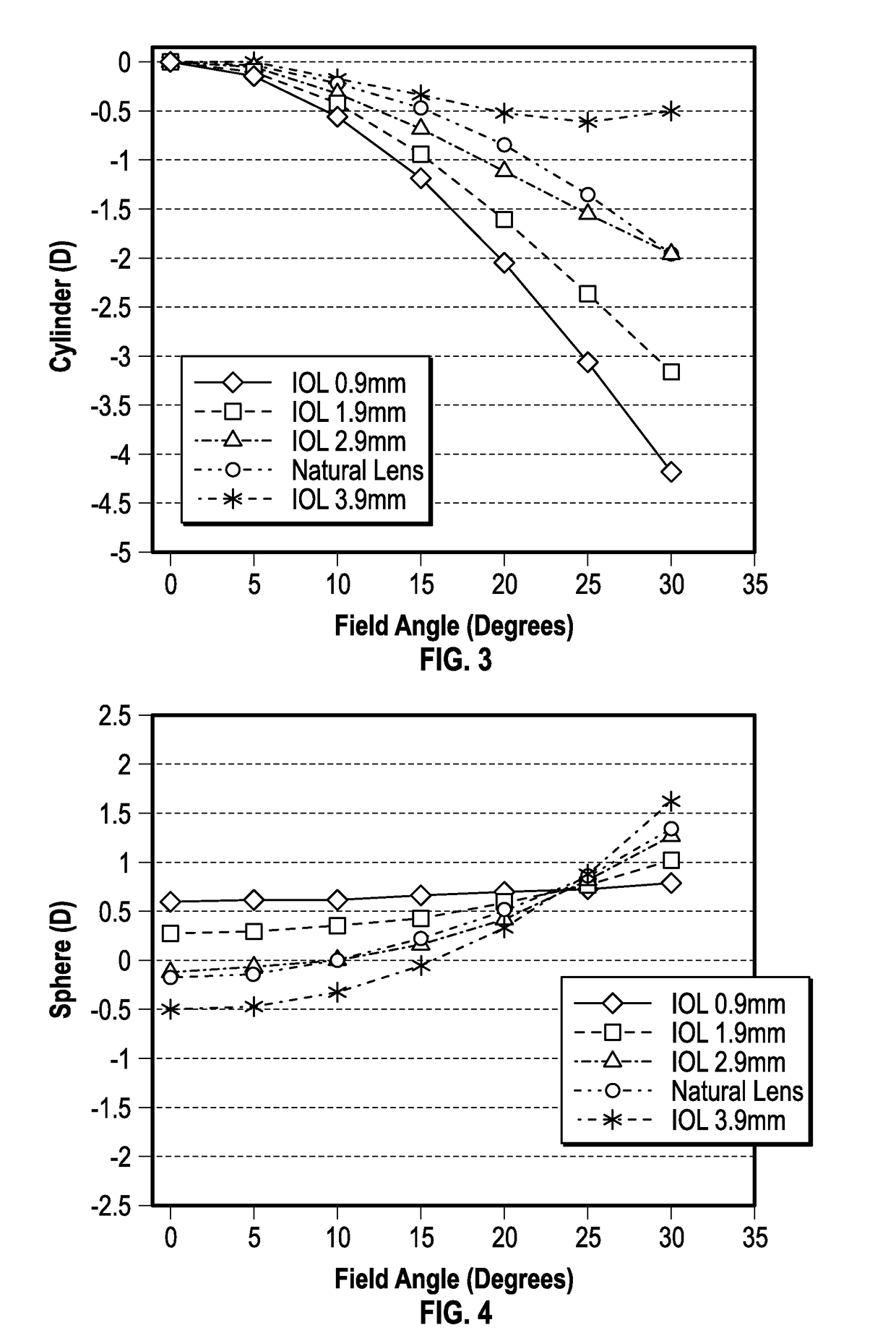Ophthalmic devices that improve peripheral vision
a peripheral vision and ophthalmic technology, applied in the field of peripheral vision improvement devices, systems and methods, can solve the problems of eccentricity increasing astigmatism, and achieve the effects of improving image quality, reducing one peripheral optical aberration, and improving image quality
- Summary
- Abstract
- Description
- Claims
- Application Information
AI Technical Summary
Benefits of technology
Problems solved by technology
Method used
Image
Examples
example embodiments
[0111]In addition to a single ring, limited ring extended depth of focus embodiments, as disclosed in application Ser. No. 12 / 971,607, can be achieved by adding a limited number of echelettes to the above detailed single ring microstructure. In general such limited ring embodiments comprise a limited number of echelettes that are either adjacent or non-adjacent to the inner central echelette and may or may not be separated by a refractive region. It should be appreciated that any variation of single and limited ring embodiments falls within the scope of embodiments disclosed herein.
[0112]FIG. 7 provides a graphical representation of a portion of a lens diffractive profile with a central echelette and one peripheral adjacent echelette according to some embodiments. In FIG. 7, the height of the surface relief profile (from a plane perpendicular to the light rays) of each point on the echelettes surface is plotted against the distance from the optical axis of the lens. The echelettes c...
example method
of Designing an IOL to Compensate for Peripheral Aberrations
[0265]An example method of designing an IOL to compensate for peripheral aberrations is illustrated in FIG. 41. The method 3000 includes obtaining ocular measurements for a patient as shown in block 3005. The ocular measurements can be obtained using a COAS and any biometer which is currently available in ophthalmology practice. The ocular measurements can include obtaining axial length of the eye, corneal power and the spherical power that achieves emmetropia. The ocular measurements can include obtaining the variation of the peripheral astigmatism, horizontal coma and spherical optical power as a function of visual field angle.
[0266]The method 3000 is configured to determine an IOL design including a plurality of optical features that compensates for peripheral astigmatism, horizontal coma and peripheral defocus as shown in the block 3025. The plurality of optical features can include one or more optical elements (e.g., f...
PUM
 Login to View More
Login to View More Abstract
Description
Claims
Application Information
 Login to View More
Login to View More - R&D
- Intellectual Property
- Life Sciences
- Materials
- Tech Scout
- Unparalleled Data Quality
- Higher Quality Content
- 60% Fewer Hallucinations
Browse by: Latest US Patents, China's latest patents, Technical Efficacy Thesaurus, Application Domain, Technology Topic, Popular Technical Reports.
© 2025 PatSnap. All rights reserved.Legal|Privacy policy|Modern Slavery Act Transparency Statement|Sitemap|About US| Contact US: help@patsnap.com



